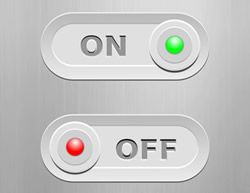Jeff Miller* says being ‘on’ all the time has affected all his co-workers and he explains what to do to stop the madness.

Image: Andrea Baratella
Many people consider themselves workaholics.
The growth of technology makes it easier than ever to be always ‘on’.
Like a lot of workers, I’m a workaholic, too.
I always work on weekends.
Until 2018, I hadn’t taken two consecutive days off in eight years.
I wore my long hours like a badge of honour.
But recently, my boss helped me consider the collateral damage to my colleagues and my direct reports.
The impact my workaholism had on my co-workers was something I hadn’t taken a close look at, despite my PhD in educational psychology and two decades of experience helping employees be more effective in the workplace.
Without realising it, I was modelling my tendency to work myself into the ground to those who work for and around me — often, to their detriment.
Whether you are a workaholic yourself, or you work with someone who exhibits workaholic tendencies, mitigating them can help maintain a productive, positive environment for everyone in the workplace.
Curbing a workaholic’s impact
According to one study, workaholics can actually create stress among co-workers.
Managers, especially, are often surprised by how attuned their employees are to their schedules.
If they are working 24/7 or never taking a vacation, they set an unspoken precedent that the same is expected of their team.
In my experience, this mirrored behaviour can also be true if the workaholic is a peer.
Trying to keep long hours and be always ‘on’ is a recipe for burnout for the non-workaholics.
Telling a workaholic to work less for the good of the team is likely not an effective strategy, though.
Some workaholics have unmet psychological needs they are trying to fill with work, such as autonomy, competence, or relatedness.
What managers can do to reduce some of the stress the workaholic is unintentionally placing on the rest of the team or organisation is to show the workaholic their impact and give them strategies to mitigate it.
Create awareness
Workaholics often seem to brag about their long hours.
I used to say, proudly, that I’d worked all weekend or hadn’t taken time off.
But my goal wasn’t to brag.
Instead, it was about addressing my own fear that I wasn’t working enough.
I felt the need to do more work all the time.
“You are in a highly visible position at this organisation,” I remember my boss telling me in a performance review, “but you’re setting a bad precedent for your team.”
She helped me see that, even though I felt fulfilled detailing the late nights I put in, it was hurting those around me.
Limit communication to working hours
Because of all the ways we’re connected — from email to shared documents to platforms like Slack — it’s easier than ever to be in touch outside working hours.
I usually spend my Sunday getting organised for the week ahead, so I’d send my team emails during that time — until one employee told me how it impacted her weekend.
She told me she felt she had to respond immediately and felt pressured to be working.
Now, I still draft my emails and other messages on Sundays, but I hit send first thing Monday morning.
Keep standard in-office hours
This is particularly true for managers and more senior employees, who often unknowingly dictate when other employees in the office feel like they can (and can’t) leave.
Instead of working late into the night, I’ve started leaving by 5 pm.
I may come home and work, but by not being physically present in the office past 5 pm, my team feels more comfortable sticking to a schedule that works for them.
Model taking vacations
Employees set an example for each other about vacation time.
If it becomes a cultural practice that employees don’t take time, it keeps them from valuable time to reset and recharge.
Taking a vacation is one of the hardest things for workaholics — so, lend support.
Individuals can increase the likelihood of achieving goals by 65 per cent when they involve another person — and 95 per cent when they check in regularly with that person about progress.
In 2018, I committed to taking 11 days off — almost one day every month.
I ended up having to take two days in December, but met the goal thanks to my colleagues holding me accountable.
Improving work for the workaholic, too
These steps are not only valuable for employees, but they can also help the workaholic.
Research shows that workaholism can negatively impact the individual’s own health and wellbeing, and even small changes can make a difference.
That’s certainly been true for me.
Leaving the office before 5 pm means I’m home to have dinner with my family.
During those 11 vacation days, I got to unplug and spend time with my wife.
My awareness of how much I worked helped me start to have a regular check-in with myself on Fridays to review all the things I got done that week.
That way, I leave feeling accomplished — and the practice has given me a big part of my weekends back.
Taking these steps has become easier, too, as I’ve realised that being a workaholic is something I’ve been doing to myself — not something my employer is demanding from me.
My next big goal?
To take a full week off twice this year.
* Jeff Miller is Associate Vice President of Learning and Organisational Effectiveness at Cornerstone.
This article first appeared at www.fastcompany.com











